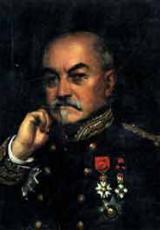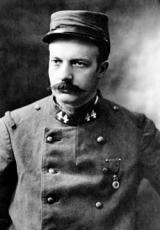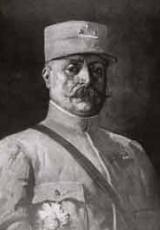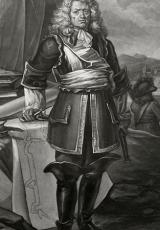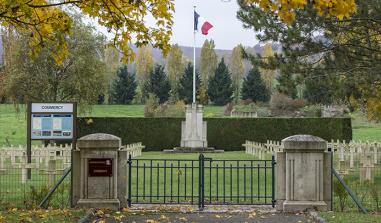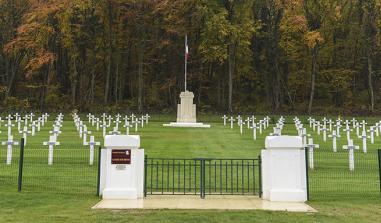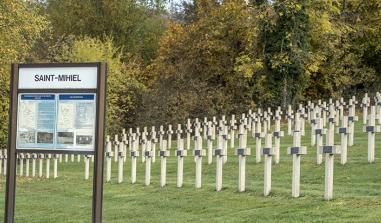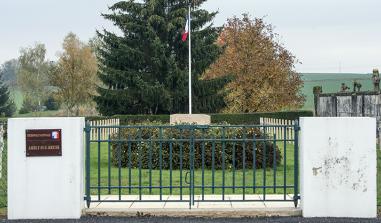Verdun

Verdun - The St-Paul Gate. Source: JP le Padellec
The citadel of Verdun ...
Verdun, which today is the capital of freedom, was once one of the most horrifying battlefields of the Great War. From February to December 1916, during 300 days and nights French and German soldiers lived here a real "hell".
The town of Verdun, in the Meuse département, is an old Gallic oppidum. Its name, made up of ver or "ford" and dun(o) "height" refers to a place that dominated an old crossing point on the Meuse river. Known as Virodunum, the Gallo-Roman castrum was later fortified, but in vain, since in 450 Attila reduced it to nothing. In Verdun in 843, Charlemagne's grandsons signed the treaty for the division of the Carolingian Empire; the document is considered to be the first written evidence of the French language. Between 870 and 879, the city, in the possession of Lotharingie, was incorporated into the kingdom of France, before falling under the rule of the Othonian Germanic empire in 923. The town was the subject of a contest of power between the lineage of counts, from whence came Godefroy de Bouillon, and the episcopal princes, supported by the Germanic emperor of the Holy Roman Empire. A bloody revolt allowed the middle-classes to escape from under their power in the 13th century. Henri II of France seized the town on the 12th June 1552 during the "Chevauchée d'Austrasie" (Austrasian wars). Charles Quint created the place de Metz on the 18th of October of the same year. Verdun thus became a border town, with the full threat of siege. In order to strengthen their power over the county, Henri and his successor, François the First, granted it special privileges and hastily modernised the medieval ramparts. Raised earth mounds and triangular bastioned flanks protected the walls from artillery fire; structures made of earth inside the square accommodated canons. One of the league towns during the Religious wars, Verdun would not submit until after Henri IV's conversion.
In 1611, Louis XIII renewed the town's protected status. In 1624, Richelieu decided to finish the Verdun citadel. He sent Marshal de Mardillac and engineers from Argencourt, Aleaune and Chastillon. The work lasted ten years: the old bastions were replaced by new ones, spaced at regular intervals around the citadel and linked together by a rampart. Vauban stared modernising the town's defensive system in 1675. He added demi-lunes in front of the medieval fortified enclosure and, between 1680 and 1690, built its bastioned enclosure, applying the principle of defensive flooding. Most importantly, he created a dyke to stop the Pré l'Evêque and closed the three crossing points on the Meuse upstream from Verdun with three bridge locks, the Saint-Amans, Saint-Nicolas and Saint-Airy bridges. In the 18th century, the town concentrated its efforts on controlling the flooding that affected the lower town. The Sainte-Croix Bridge, what is now the Legay Bridge, was rebuilt with wider arches. The Anthouard and Jeanne d'Arc barrages were created in order to end the residents' duty to provide accommodation for the soldiers of the garrison. The royal power no longer looked after the fortifications. Only the "Polygone des mineurs" (now at Thierville, near the Niel barracks) in the north was suitable to be used as an exercise ground for troops. During the revolutionary wars the town, under the command of Beaurepaire, was to capitulate on the 30th August 1792. The Germans thus occupied the town for six weeks before withdrawing on the 14th October when confronted by Kellermann. Under the First Empire, Verdun, at some distance from the front, did not really interest the fortifications commission. It was only after 1815, when France was back in the same situation as in 1789, that the authorities undertook work to reinforce the town along the lines of Vauban's fortifications: the new gate was opened (next to today's Carrefour des Maréchaux), to the North -East, a curtain wall strengthened the demi-lunes on Chaussée and Minimes (now the rue de la Liberté and rue du 8 mai 1945) and three networks of counterscarp galleries were dug under the glacis on the Saint-Victor side (Jules-Ferry school).
During the Franco-Prussian war of 1870, troops from Verdun (1,500 garrison soldiers, 2,000 mobile guards and 1,400 men from the national sedentary guard), consolidated by 2,600 survivors of Sedan, under the command of General Guérin de Waldersbach and General Marmier, defended the territory against the 10,000 recruits of the Prince of Saxony. On the 23rd September his army totally surrounded the town, commandeering the inhabitants of the neighbouring villages to commit to investment. The town, besieged and under fire from 140 heavy artillery pieces, surrendered on the 8th November. It would be governed by the prefect of Bethmann-Hollweg until the 13th September 1873. In 1874, the French government made rearming Verdun its top priority. It made General Séré-de-Rivières responsible for creating a defensive network from Verdun to Toul. And so, within forty years, the town became the strongest place in Europe: within a radius of 40 km around the town, the engineer built two rings of forts (19 in total, including 14 in concrete); seven kilometres of parallel underground galleries 20 metres below ground completed the structure (in 1888) with a railway network 185 km long with stone reinforced tracks for horse carriages and pieces of artillery. These alterations to the Meuse countryside were accompanied by social changes. The population and the economy became "militarised". There were soon to be more soldiers than civilians (27,000 compared with 13,300), the army became the largest employer in the area, the quarries and blast furnaces worked almost exclusively for the construction and arming of the forts and the countryside was used as a training ground for troops. Of the two sides who confronted each other for 300 days during the First World War, the Verdun sector had the largest concentration of troops; between February and July 1916 losses under General Nivelle's command totalled 62,000 dead, in other words, 812 deaths a day. The civilian population had fled the town. Only the general staff occupying the underground citadel and the Fire Brigade stationed in the cellars of the Mairie remained in the besieged town of Verdun. The town would be awarded the Légion d'Honneur and the Croix de Guerre with palms by the President of the Republic, Poincaré, on the 13th September 1916. The people of Verdun emerged battered from the fighting and peace returned. The French and American Red Cross and organisations from the Duchy of Luxembourg brought aid to the returning inhabitants: a canteen was set up in the railway station, a dispensary opened in rue Saint-Sauveur and a municipal cooperative association took up residence in the Town Hall. American troops remained until May 1919. The rebuilt cathedral, a reminder of the historic Verdun and a point of reference for the Poilu (slang term for a foot soldier) and the citadel, a symbol of resistance against the enemy, formed the basis of the city's memorial centre, along with the military cemeteries, the national necropolis at Douaumont and battlegrounds such as the Bois-des-Caures.
The reconstruction of Verdun, approved by two Meuse statesmen, Raymond Poincaré and André Maginot, was scheduled for 1917. The town centre, which was planned further to the north of the town on specially declassified military land, demonstrated the desire to emphasise its industrial nature through the construction of two railway stations and major development of its ports. The state made around 16,000 hectares of land, the principal battlefields, available for redevelopment, some of which would be replanted with trees. The soldiers' graves would be brought together in the national necropolis (Douaumont), or in more modest cemeteries (Glorieux and Bevaux). The tomb of the unknown soldier of Verdun was created in the citadel in 1920. The urban topography now conjures up the battle through the names of new streets and the renaming of others. A war museum was built and the monument to the children of Verdun who died for France was opened in 1928, followed by another one, dedicated to the Victory (inaugurated in 1929), as well as that to the 375 Territorials who died in the fire in the munitions store in 1916 (square d'isly); commemorative plaques have been put up in the citadel and in the barracks etc. When war was declared on the 3rd September 1939, Verdun took up its function as a garrison town once again.
It was used for assembling the troops to be sent into action along the length of the Northern and Eastern border. On the 13th May 1940, the Germans crossed the Meuse at Sedan and took the Maginot line from the rear. Following the capture of the La Ferté fort and the surrounding of Dunkirk, General Hutzinger gave the order to organise defending the Verdun area. The commander in charge of the town, General Dubuisson, had anti-tank obstacles constructed, artillerymen were sent to Séré-de-Rivières' forts and a halting line was set up in the Bois Bourru at the Besonvaux ravine. On the evening of the 15th June 1940, the German army arrived in Verdun. In the cemeteries at Bévaux and Faubourg-Pavé the bodies of its defenders were laid to rest. The occupying army set up headquarters in the place de la Nation (the Freiskommandantur) and in Coq-Hardi hall (the Feldgendarmerie). A prison was opened in rue du Rû, soldiers moved into the barracks (Verdun was used as a training centre for young recruits) and frequented the cafés such as the Café de la paix and Le Continental; the Thierville and Jardin-Fontaine barracks were converted into the Frontstalag. The liberation of the Mause took allied troops a week. The Wehrmacht was against a summary defence: tanks and artillery equipment were positioned, at the Voie Sacré crossroads and the road to Châlons and at a place called Moulin-Brûlé, in the suburb of Glorieux. The city could once again provide eyewitness accounts of war. The Beaurepaire bridge, saved from being blown up by the resistance fighter Fernand Legay, was renamed in his honour. The renamed avenues "de la DB US", "du 8 mai 1945" and "du Général-de-Gaulle" came to enrich the toponymy. Plaques and commemorative monuments sprang up: a plaque in honour of Legay on the bridge of the same name, the posts marking the Route of Liberty, the monument to the Resistance fighters slaughtered on avenue de Metz and the one to the Fusillés (those shot by firing squad) of Thierville.
France's participation in the North Atlantic Treaty Organisation (NATO) left its mark, most notably in the American logistical buildings. The former Maginot barracks was restored in 1951 and was used for housing troops. At the Jardin-Fontaine (the former manoeuvring area for Thierville behind the Maginot barracks), US troops erected special prefabricated buildings to house the engineers and hold religious services, and other public facilities (gymnasia, car parks, garages etc.). Soldiers' tombs can still be seen in the public cemetery. The 50 hectares on the banks of the Etang Bleu were converted into depots and workshops and some of this equipment would be used in the making of the film "The Longest day". The "Chicago" zone, developed in 1953, first contained a laundry and later a bakery. The Fort du Rozelier was converted into a NATO munitions depot intended to receive atomic weapons. In 1958 a hospital was built on the former Faubourg-Pavé aerodrome in the Désandrouins sector. The Gribauval barracks became a place for accommodating troops. On the 22nd September 1984, the 70th anniversary of the start of the First World War, the West German Chancellor, Helmut Kohl, and the President of the Republic, François Mitterrand, sealed the friendship between the two nations by mounting a plaque in memory of all servicemen at the German necropolis in Consenvoye. Three years later The United Nations (UN) awarded the Meuse city the statute of World capital of Peace, freedom and the rights of Man.
Some historic sites to visit in Verdun The underground citadel The underground citadel Visit the underground galleries of the citadel on board of a small train and discover the every day life of the "poilus" during the First World War. Open an entire year Tariffs : Adults : 6€ Children : 2,5€ Underground citadel Avenue du 5ème RAP 55000 VERDUN Tel : 03 29 86 14 18 The Douaumont ossuary The initiative to build an ossuary in Douaumont, comes from the bishop of Verdun, His Eminence Ginisty. Situated in the heart of the battlefield, this ossuary measuring 137meters in length, is dominated by an 46 meters high tower and was built between 1920 and 1932 thanks to a contribution launched in 1919. It shelters human remains of 130 000 soldiers. In front of this monument the national necropolis, inaugurated on 1929, contains tombs of 15 000 combatants. Open every day from March to November Tariffs : Adults : 3,50€ Children : 2€ Phone : 03 29 84 54 81 The Douaumont fort Interior visit on two gallery levels and casemates. Open every day Tariffs : Adults : 3€ Children : 1,50 € Phone : 03 29 84 41 91 The Verdun memorial Located in Fleury-devant-Douaumont, on the site of the old village station, the Verdun memorial, also known as the memorial of freedom, was built in the sixties, thanks to the initiative of the National Committee for the Memory of Verdun (Comité National du Souvenir de Verdun CNSB) chaired at that time by the writer Maurice Genevoix. The official opening took place in 1967. The museum has a strong historical und pedagogical vocation. Open every day from February to December Tariffs : Adults : 5€ Children : 2,50 € Phone : 03 29 84 35 34 Office de Tourisme de Verdun Avenue du Général Mangin 55100 Verdun E-mail :contact@tourisme-verdun.fr Tél : 03 29 84 55 55 Fax : 03 29 84 85 80
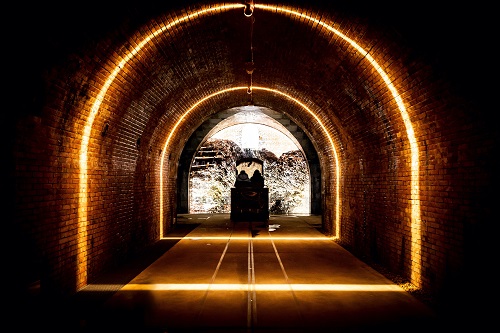
Citadelle
©Anne Schwab Nodee-CAGV
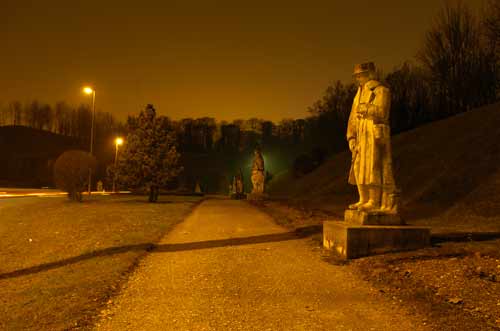
Vue nocturne du carrefour des Maréchaux. Source : JP le Padellec
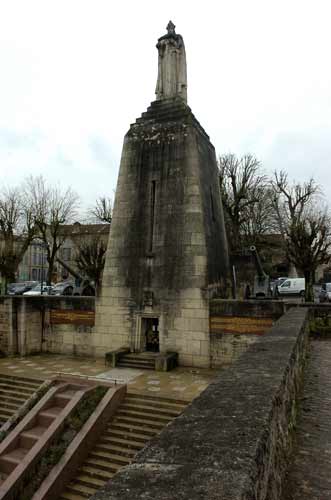
Monument de la Victoire. Source : JP le Padellec
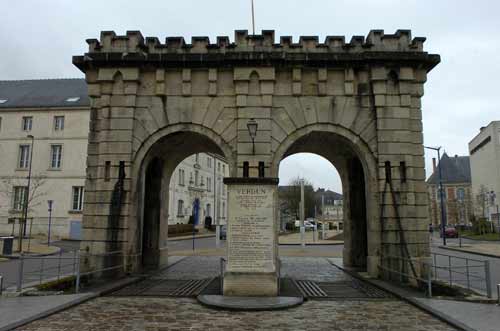
Verdun - Porte St-Paul. Source : JP le Padellec
Practical information
Rue des Hauts-Fins 55000
Verdun
Tél : 03 29 84 55 55 Fax : 03 29 84 85 80
Accessible toute l'année
Read more
Personalities
Related articles
- Ils ne passèrent pas - Poème sur Verdun
- La bataille de Verdun
- La Première Guerre mondiale (1914-1918)
- Les enjeux de la Voie Sacrée
- The RICM, the most decorated regiment of the French army
- Le système Séré de Rivières
- Poème - Le Testament du Fantassin
- Tranchées et boyaux
- Verdun dans les Hommes de bonne volonté de Jules Romains
- 1917, l'arme blindée à l'assaut du front


